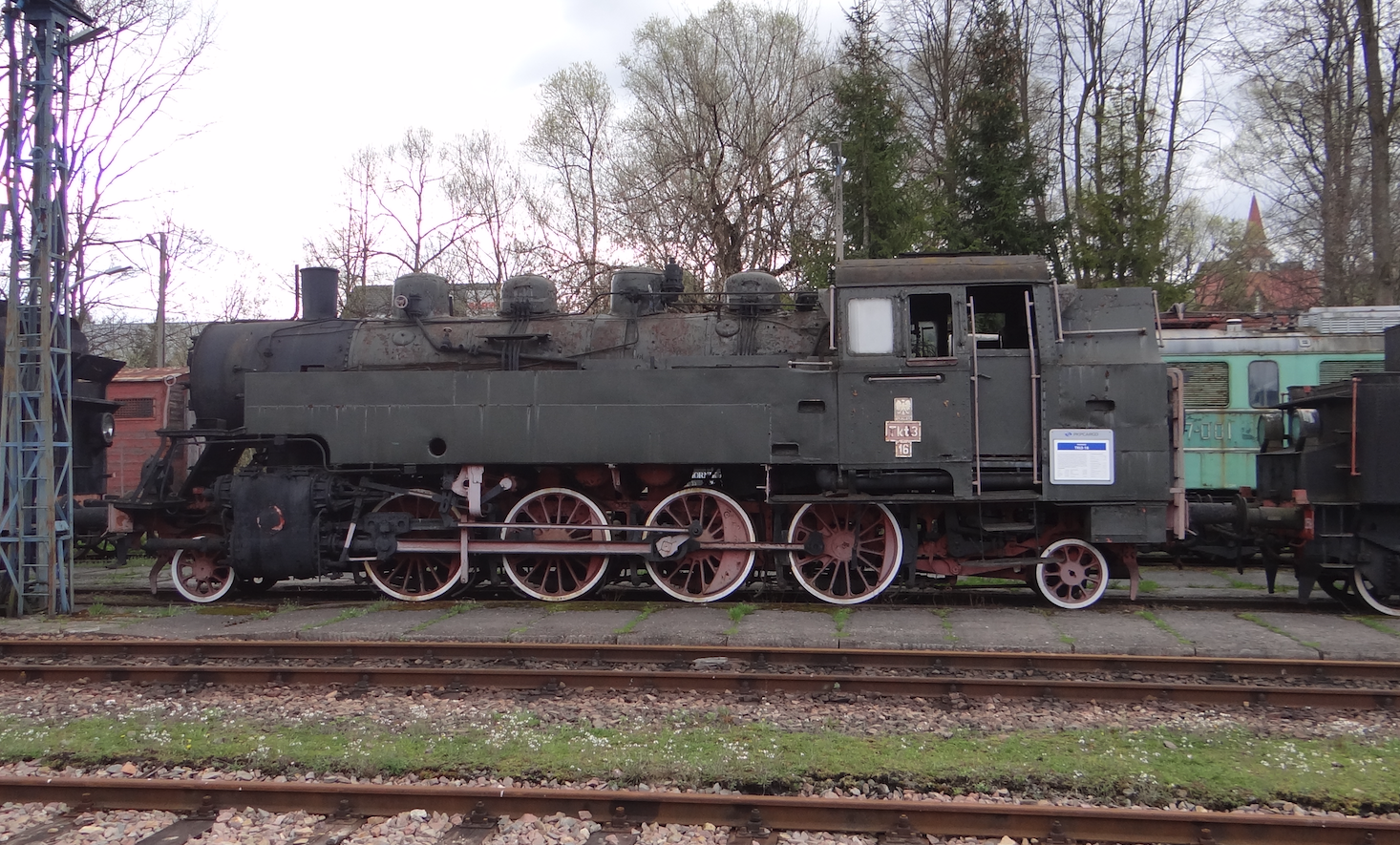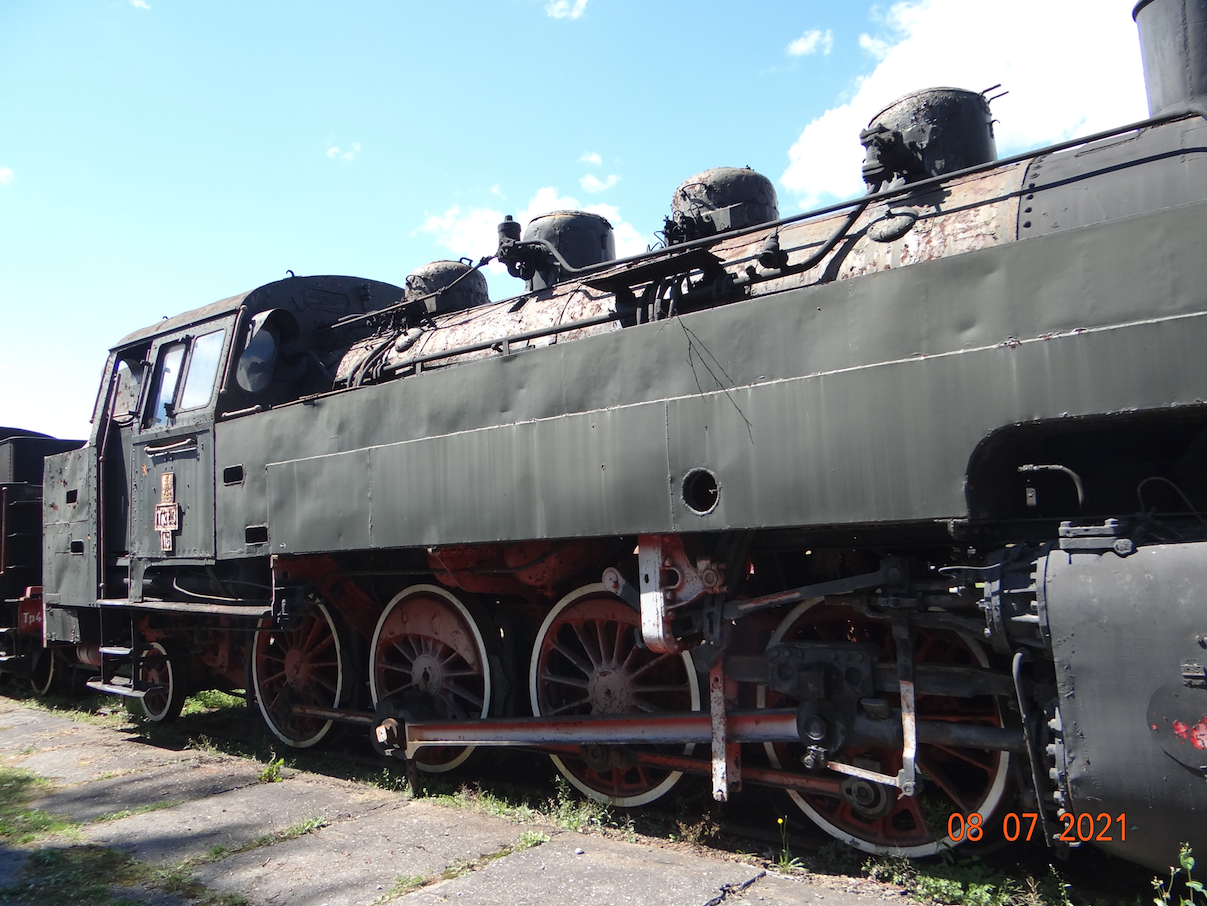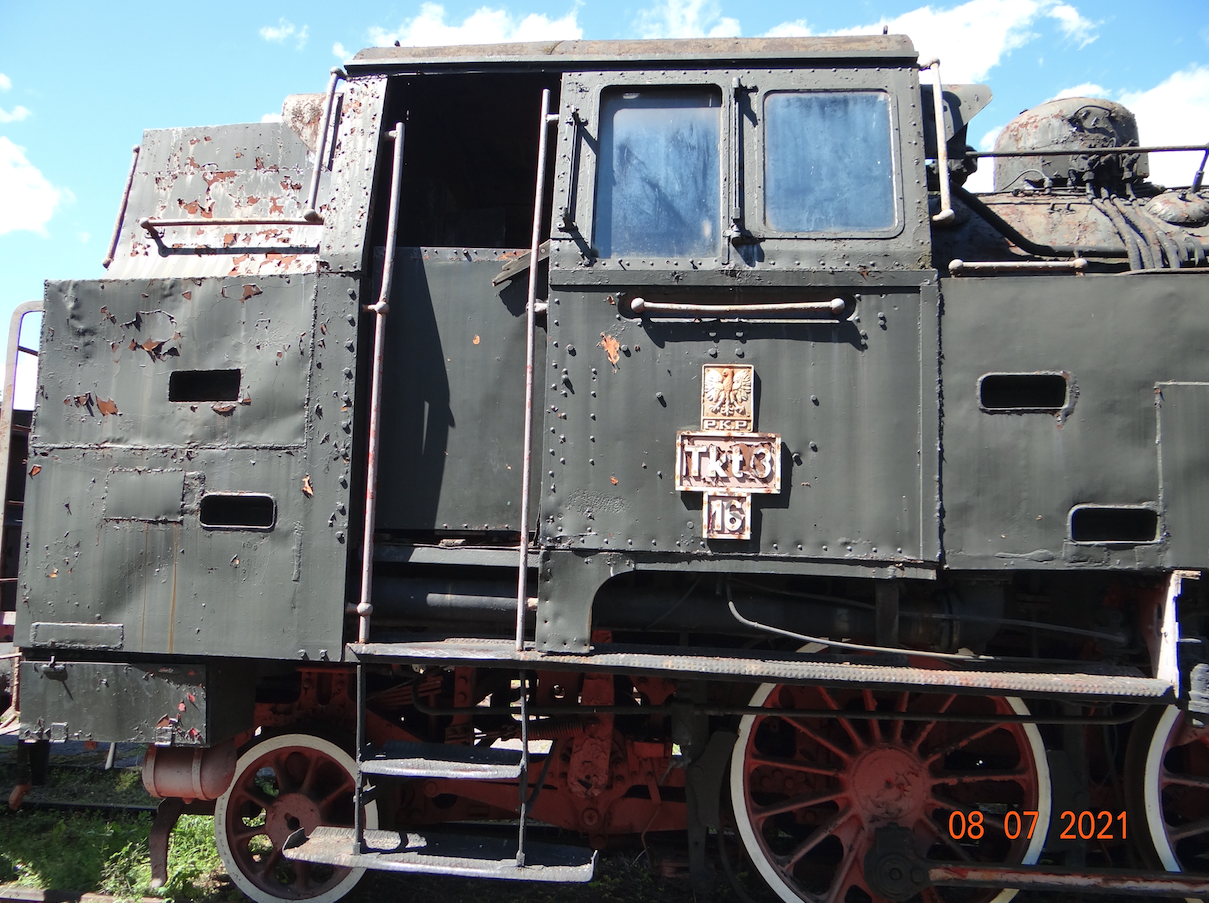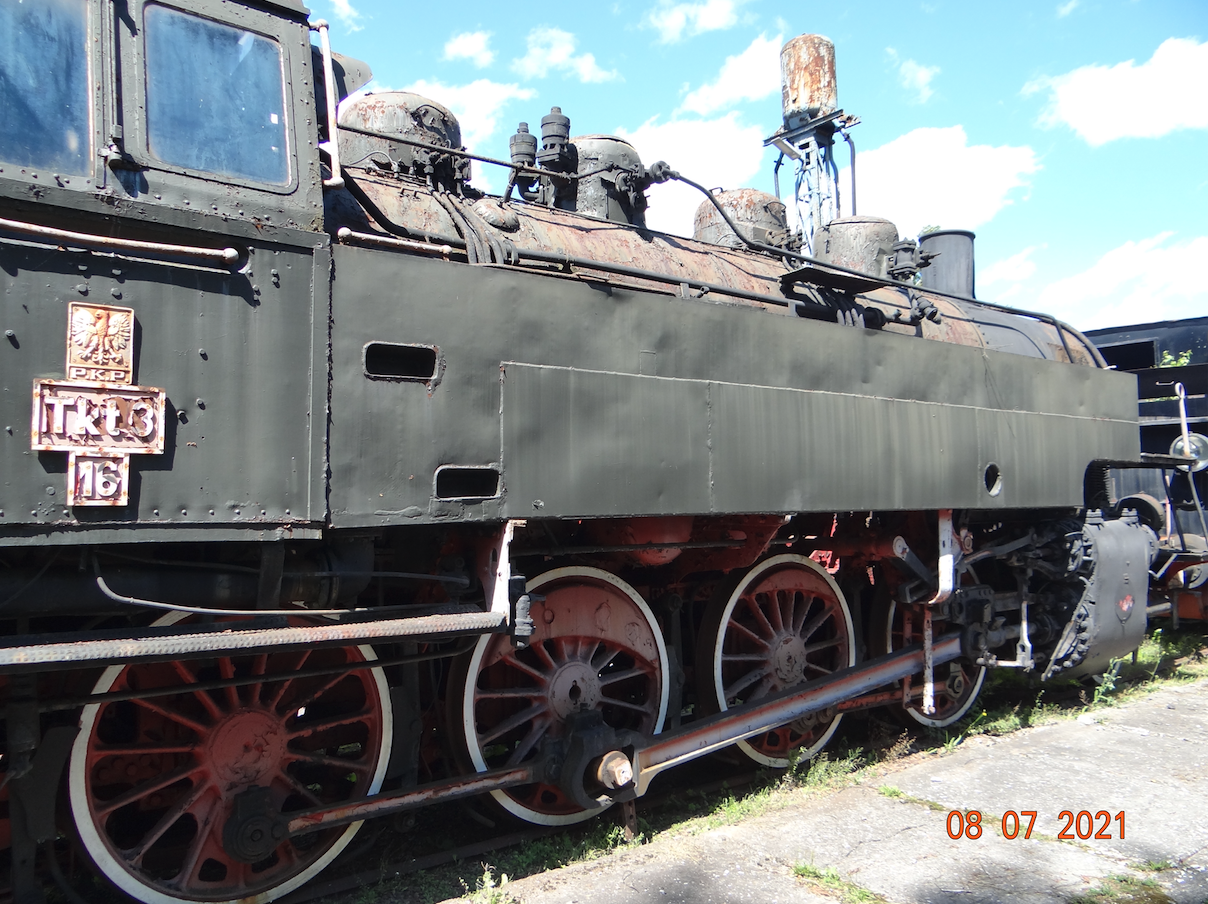Chabówka 2022-01-12
Steam locomotive TKt3-16.
After the Great World War, the development of steam locomotives was already well advanced. Steam superheater and air brakes were commonly used. Standard locomotives already reached a running speed of 90 km / h and pulled trains weighing up to 1,500 tons. There was already a clear division into locomotives operating on the main routes and local routes.
During the development of the new locomotive, the experience gained from the operation of steam locomotives during the Great War was taken into account. It was decided to develop a standardized steam locomotive that could be produced in various factories. This is how a standardized BR86 steam locomotive was created. The BR86 steam locomotive was derived from the BR64 steam locomotives in a straight line. The production of the BR86 steam locomotive was carried out in the period 1927-1933, and after the outbreak of World War II, in some factories in the occupied countries. Among others, at HCP in Poznań, where production lasted from 1940 to 1943. 73 machines were built in Poland. A total of 775 BR86 steam locomotives were produced.




The steam locomotive is distinguished by a relatively low axle load, i.e. 15,000 kg per axle. Therefore, it was perfect for secondary rail routes that had weaker tracks. Thanks to the chip-tray system, the locomotive does not require a turntable. The size of the wheels predestined the locomotive both for driving trains on the route and for shunting. The steam locomotive was suitable for work on mountain trails. The steam locomotive pulled a 900-ton train at a speed of 70 km / h.
After the Second World War, Poland was awarded 46 BR86 steam locomotives, which were designated by the Polish State Railways as the TKt3 series. The last TKt3-15 steam locomotive was completed in 1975. Until now (2022), the locomotive TKt3-16 has been preserved, which is located in the open-air museum in Chabówka.
TKt3-16.
The locomotive was built at the factory of industrialist Ferdinand Schichau in Elbląg. Schichau's works in Elbląg were mechanical plants, including a shipyard, which operated in the period 1855 - 1945. The locomotive was built in 1935, had a serial number 3286, and was marked DRG 86 240. In 1945 it was taken over by the Polish State Railways and received designation TKt3-16. The locomotive operated successively: from April 1945 in Poznań, from August 1946 in Jarocin, from January 1947 in Nysa, from October 1947 in Oświęcim, from November 1947 in Łódź Kaliska, from February 1948 in Nowy Sącz, from August 1959 in Żagań, from April 1963 in Poznań, from May 1963 in Chełm, from October 1963 in Kielce, from May 1964 in Dęblin. In June 1964, the locomotive was sold for industrial work to KWK Zabrze. The locomotive worked until 1982.
T-T data of the TKt3 steam locomotive:
The production was carried out in the period 1927 - 1943. Axle system 1'D1 ', otherwise oOOOOo, and in Poland a small letter "t". The empty weight of the locomotive is 70,400 kg. Service weight of 88 500 kg. Length 13.82 m. Height 4.17 m. Driving wheels diameter 1.40 m. Roller diameter 0.85 m. Pressure in the boiler 16 atm (at). Boiler heating area 117.7 m2. Superheater area 47.0 m2. Grate area of 2.34 m2. Design speed 70 km / h, and 80 km / h after the modernization of the bogies.
Written by Karol Placha Hetman
